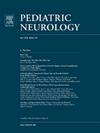Cardiac Implications in Dravet Syndrome: Can Electrocardiogram and Echocardiography Detect Hidden Risks?
IF 3.2
3区 医学
Q2 CLINICAL NEUROLOGY
引用次数: 0
Abstract
Background
Dravet syndrome (DS) is a severe developmental and epileptic encephalopathy associated with loss-of-function variants in the SCN1A gene. Although predominantly expressed in the central nervous system, SCN1A is also expressed in the heart, suggesting a potential link between neuronal and cardiac channelopathies. Additionally, DS carries a high risk of sudden unexpected death in epilepsy (SUDEP). This study investigates electrocardiographic (EKG) and echocardiographic findings in patients with DS to assess potential cardiac risks.
Methods
This prospective study recruited 34 patients with DS with confirmed SCN1A pathogenic variants during the 2024 family meeting of the Dravet Syndrome Foundation Spain. Participants underwent standard 12-lead EKG, high-lead EKG for Brugada pattern detection, and a standing test to evaluate QT interval response. When available, echocardiogram data were collected. QTc and P wave dispersion were calculated. To establish a basis for comparison, cases were matched with age- and sex-matched epileptic patients without DS.
Results
No significant EKG abnormalities suggesting long QT syndrome or Brugada syndrome were detected. However, QT and P wave dispersion, previously reported as markers of autonomic dysfunction associated with arrhythmias and SUDEP risk, were elevated. Echocardiograms in 21 patients showed normal cardiac structure, even in those on fenfluramine.
Conclusions
Although no significant EKG or echocardiographic abnormalities were identified, elevated QTc and P wave dispersion, along with the elevated risk of SUDEP and past reports of arrhythmias, suggest the need for continued cardiac surveillance. Further studies are essential to explore the predictive value of QTc and P wave dispersion in assessing SUDEP and arrhythmia risk, and to identify other potential cardiac markers.
心电图和超声心动图能发现潜在的危险吗?
背景:Dravet综合征(DS)是一种严重的发展性和癫痫性脑病,与SCN1A基因的功能丧失变异相关。尽管SCN1A主要在中枢神经系统中表达,但它也在心脏中表达,这表明神经元和心脏通道病变之间存在潜在联系。此外,DS伴有癫痫猝死(SUDEP)的高风险。本研究调查了退行性椎体滑移患者的心电图(EKG)和超声心动图结果,以评估潜在的心脏风险。方法:这项前瞻性研究在西班牙Dravet综合征基金会的2024年家庭会议上招募了34名确诊为SCN1A致病变异的DS患者。参与者接受标准的12导联心电图、用于Brugada模式检测的高导联心电图和评估QT间期反应的站立试验。可用时,收集超声心动图数据。计算QTc和P波色散。为了建立比较基础,将病例与年龄和性别匹配的无退行性痴呆患者进行匹配。结果:无明显心电图异常提示长QT综合征或Brugada综合征。然而,QT和P波离散度升高,这是先前报道的与心律失常和SUDEP风险相关的自主神经功能障碍的标志。21例患者的超声心动图显示心脏结构正常,即使在服用芬氟拉明的患者中也是如此。结论:虽然没有发现明显的心电图或超声心动图异常,但QTc和P波离散度升高,以及SUDEP风险升高和既往心律失常报告,提示需要继续进行心脏监测。进一步研究QTc和P波离散度在评估SUDEP和心律失常风险中的预测价值,以及识别其他潜在的心脏标志物是必要的。
本文章由计算机程序翻译,如有差异,请以英文原文为准。
求助全文
约1分钟内获得全文
求助全文
来源期刊

Pediatric neurology
医学-临床神经学
CiteScore
4.80
自引率
2.60%
发文量
176
审稿时长
78 days
期刊介绍:
Pediatric Neurology publishes timely peer-reviewed clinical and research articles covering all aspects of the developing nervous system.
Pediatric Neurology features up-to-the-minute publication of the latest advances in the diagnosis, management, and treatment of pediatric neurologic disorders. The journal''s editor, E. Steve Roach, in conjunction with the team of Associate Editors, heads an internationally recognized editorial board, ensuring the most authoritative and extensive coverage of the field. Among the topics covered are: epilepsy, mitochondrial diseases, congenital malformations, chromosomopathies, peripheral neuropathies, perinatal and childhood stroke, cerebral palsy, as well as other diseases affecting the developing nervous system.
 求助内容:
求助内容: 应助结果提醒方式:
应助结果提醒方式:


